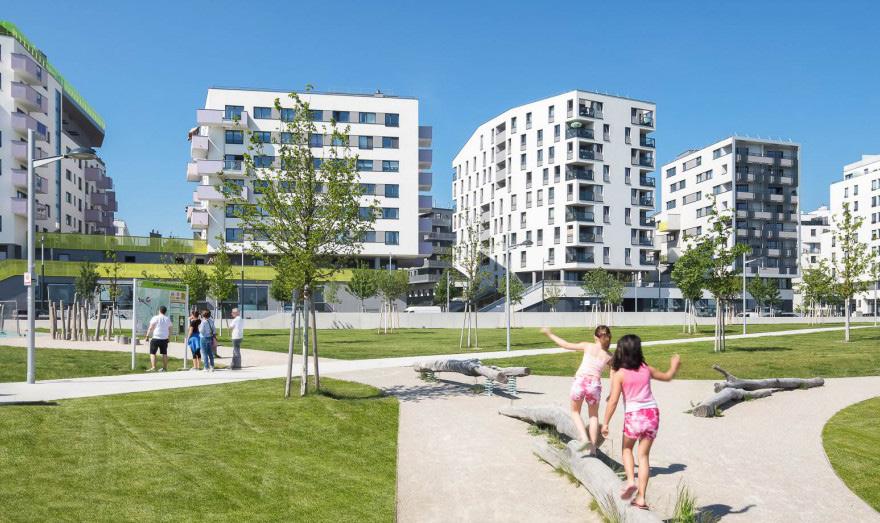
2 minute read
Gender Sensitive Planning in Vienna
Figure 2.9 Seestadt Aspern, Vienna (Daniel Hawelka 2017).
Vienna, Austria has been rated the ‘highest
Advertisement
quality of living in the world’ in both 2009
and 2010 according to the Mercer Study
(Irschik and Kail, 2013, p.193). There
is no doubt that the gender sensitive planning initiatives this city has done helped influence this rating. Since 1991,
the city administration has spent decades working towards a gender inclusive city by acknowledging the needs of women (Irschik and Kail, p.194). In 1991, Eva Kail
and Jutta Kleedorfer were the two young female planners who initiated gender sensitive planning for Vienna. By 1998, the Co-ordination Office for Planning and
Construction Geared to the Requirements of Daily Life and the Specific Needs of Women, led by Eva Kail, started to include
gender sensitive planning within the city’s
administration (Irschik and Kail). They
have tackled gendered issues on housing, social spaces, park design, transportation and many others (Irschik and Kail).
Throughout the years, this department has implemented new standards and designs for gender inclusivity that can inspire change in other parts of the world.
48
This case study will be analyzing the
work this department has done for the transportation networks in Vienna. The 2003 Transport Master Plan for Vienna had the Co-ordination Office leading the
work on pedestrian safety. The existing narrow streets and sidewalks had to be fixed so they implemented two meter sidewalks in their masterplan which later became standard practice. Completed in 2011, the Co-ordination Office created
a pedestrian network master plan that highlighted the connections and value of public space. They focused on pavement width, obstacles on sidewalks, pedestrian accident hot-spots and many others. They also analyzed the pedestrian
accessibility of essential services such as kindergartens, retirement homes, parks and public transport stops. In 2002, Mariahilf, Vienna became the pilot district for gender mainstreaming. Within their
second year of projects, the Co-ordination office developed three departments for analyzing gender issues in Mariahilf:
Traffic Organization, Road Construction
and Public Lighting. Over time, Mariahilf
has made over 60 improvements to street junctions, widened over 1,000 meters
of sidewalks, implemented barrier-free design, additional places for seating and improved lighting visibility in 26 spots (Irschik and Kail, 2013, p.214). Mariahilf
and Vienna’s city administration is an
example of how change can be made when people acknowledge the needs of women. Municipalities and urban designers have to start implementing gender sensitive planning practices in their cities.
49
Figure 2.10 Eva Kail in a meeting (The Urban Advisory, n.d.).











